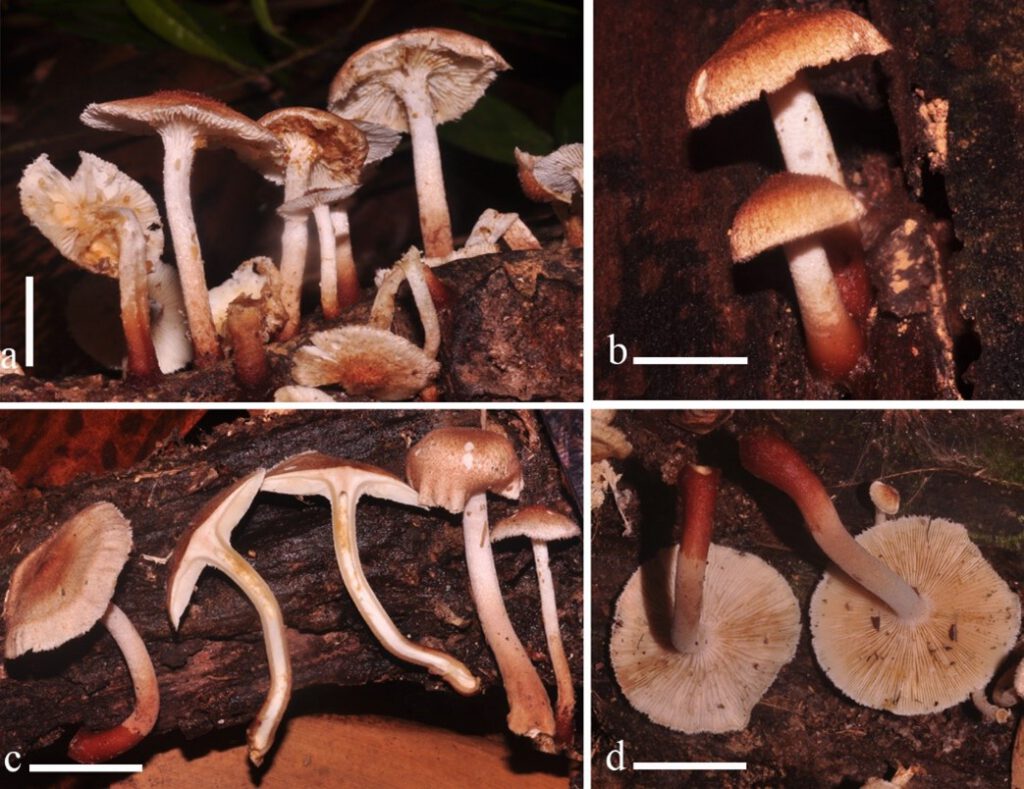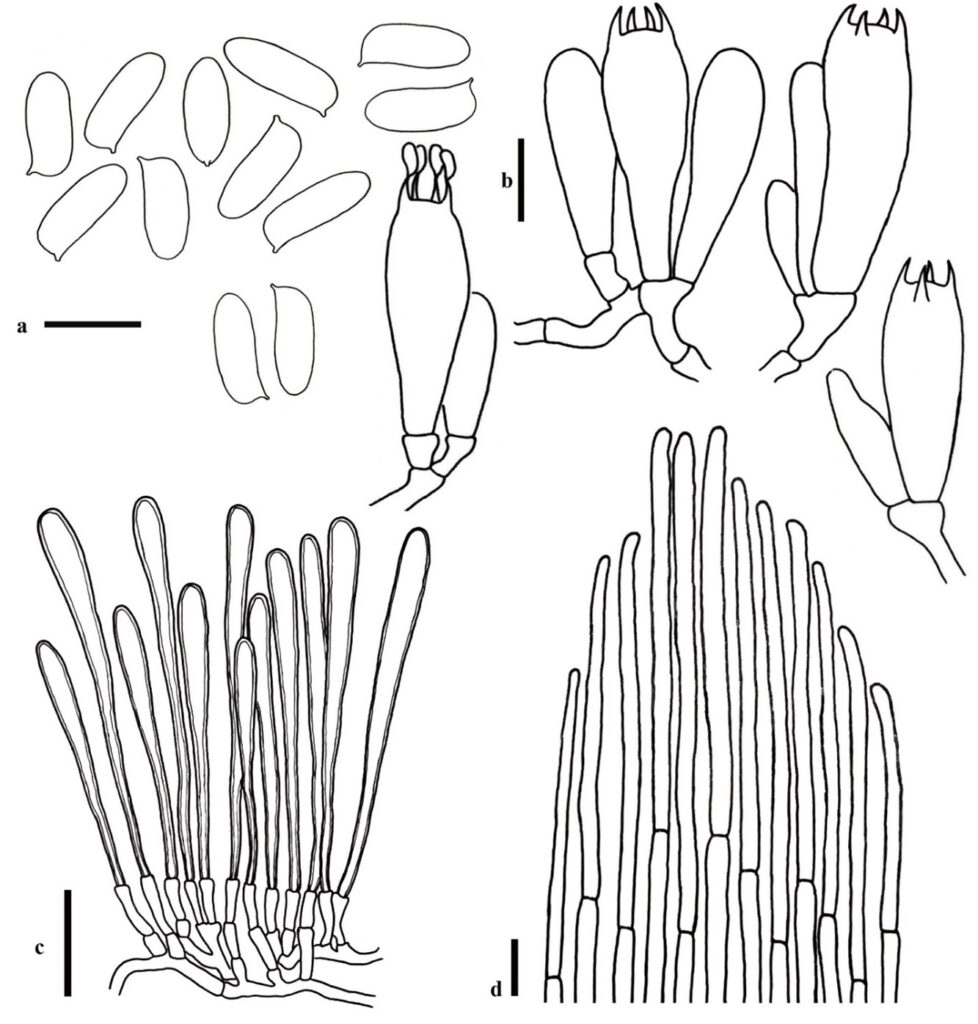Heliocybe villosa Ming Zhang & T.H. Li
MycoBank number: MB 570533; Index Fungorum number: IF 570533; Facesoffungi number: FoF 10365; Fig. 1-2
Pileus 30–50 mm, hemispherical brownish orange to light brown (7C6, 7D7) when young, then expending to applanate with age, with subumbonate to umbonate center brown to light brown (7D7, 7E7), often dark at the center toward pale near margin, straight, not spit when young then crenulate with age, white (7A1) of margin edge, dry surface, covered with brownish orange to light brown (7C6, 7D7) more villous hair at center, less toward margin, with agglutinate to small squamules cream to dirty white then paler with age background. Lamellae crowded with lamellae of six to seven-length, 2–3 mm broad, tricholomatoid, adnate to subdecurrent white to cream (3A1) when young, becoming brownish-yellow (5C8) to light brown (6D8) with edge. Stipe central, 30–80 mm long, 2–4 mm wide, surface dry, equal or less subbulbous to more swollen base, densely soft hairs, light brown, reddish brown to dark brown (7D7), downwards to the base and becoming white near teeth from lamellae to apex. Context 5–7 mm, tick at the center pileus, solid to fistulose, leathery when dry, white to cream. Taste and odor not observed. Spore print white.
Basidiospores (5.7–)5.7–7.3(–9.1) × (2.2–)2.4–3.3–4.4) µm, Q (1.58–)1.63–2.25–2.86(–2.87), smooth, broadly ellipsoid, subcylindrical side view, oblong in front view, hyaline and thin-walled. Basidia (9.2–)9.2–12.2–15.3(–15.3) × (3.4–)3.4–4.6(–4.6) µm, more clavate to less narrowly clavate, hyaline, thin-walled, sterigmata 2–3 µm long, 4-spored, some 2-spored. Pleurocystidia not observed. Cheilocystidia (47.8–)54.6–71.8–98.5(–108.3) × (2.7–)3.4–5.2–7.5(–8.3) µm, long narrowly clavate, becoming bigger to oblong at apex zone, brown thick cell walled. Pleurocystidia absent. Hymenophoral trama subregular bilateral hyphae, thick-walled with hyaline, hyphae 4–6 µm wide. Pileipellis a trichoderm moderated crowded of narrowly cylindrical elements, slightly oblong to apex, pale brown to dark brown pigment, 5 µm wide, terminal cell up to 250. Stipitipellis hyphae 3-5 µm wide, yellow-brown pigment same as Pileipellis. Clamp connection absent in all hyphae tissue.
Habitat and distribution – Saprobic fungi on dead decay wood, growing in big groups of 6-20 basidiomes. Found the first time at Guangdong Province in southern China, and Krabi in the south of Thailand.
Materials examined – LAOS, Vientiane Capital, Xaythany district, Houay Yang Forest Reserve, 15 September 2015, Phongern sysouphanthong (HNL503374); ibidem, Vientiane Capital, Xaythany district, Houay Yang Forest Reserve, 21 Octorber 2015, Phongern sysouphanthong (HNL503410).

Fig. 1 – Morphology of Heliocybe villosa on the field (scale bar 50 mm)

Fig. 2 – Micro-morphology of Heliocybe villosa, a Basidiospores, d Basidia, c Cheilocystidia, d trichoderm pileipellis. (Scale bar a–b=10 µm, c=10 µm, d=20 µm).
